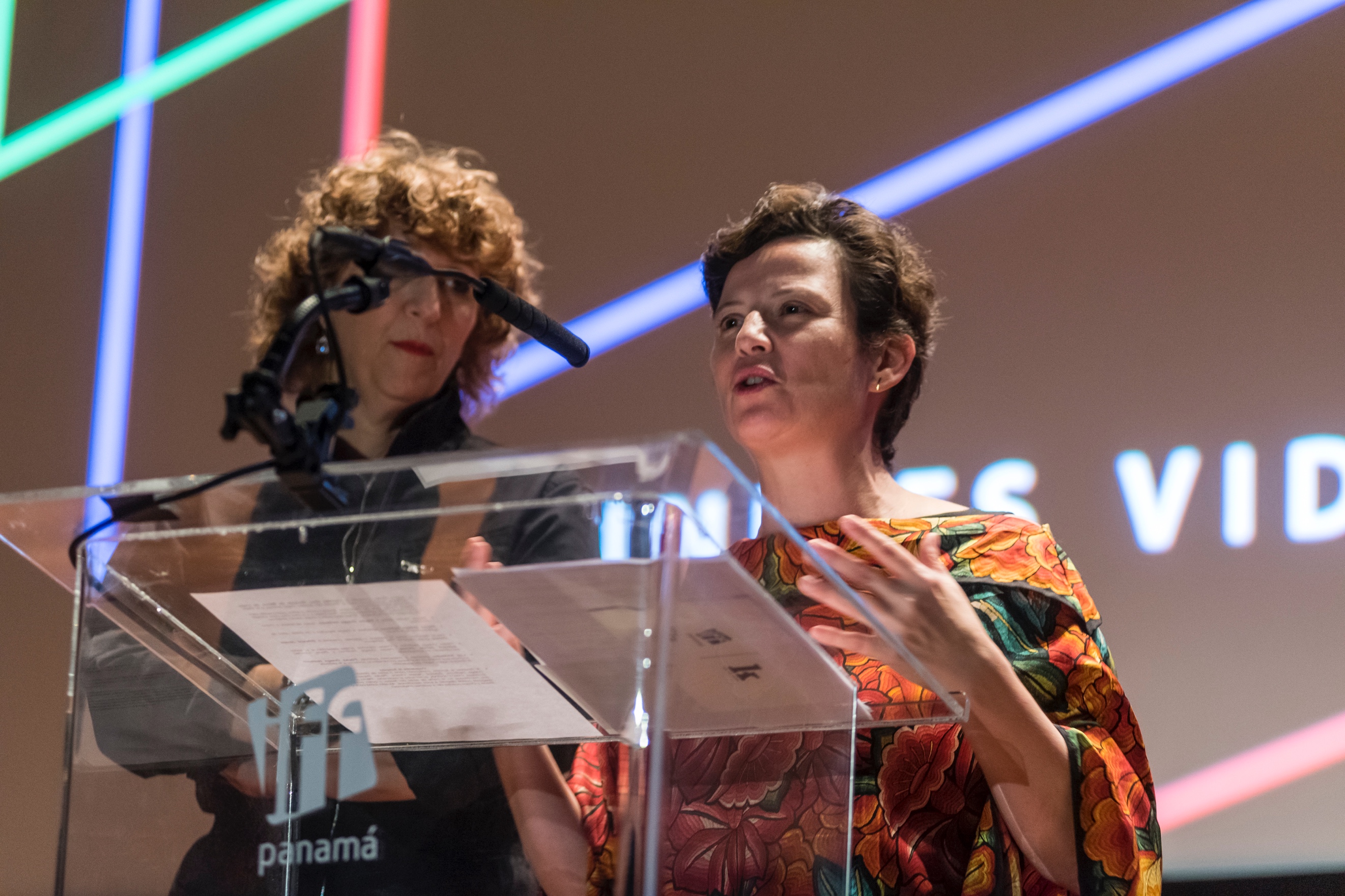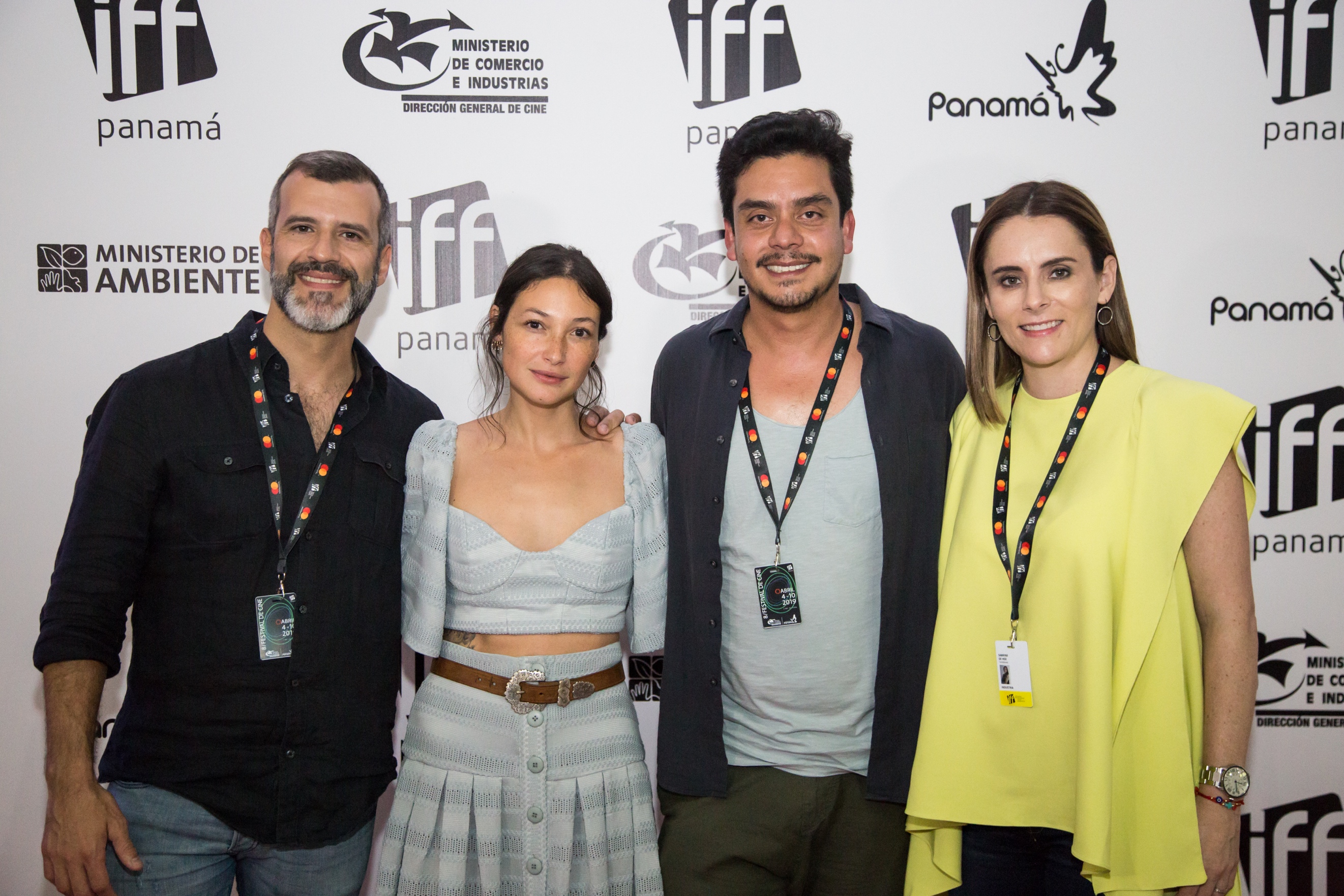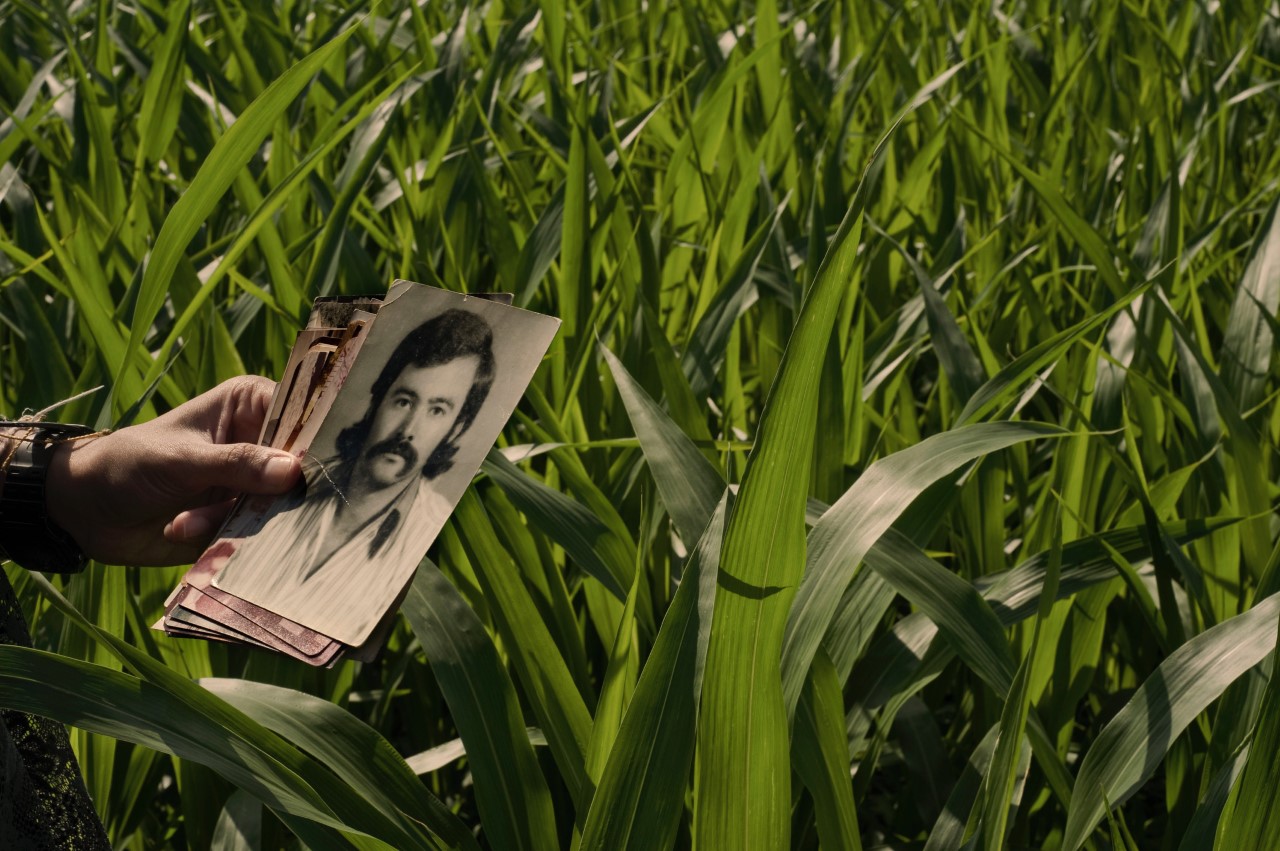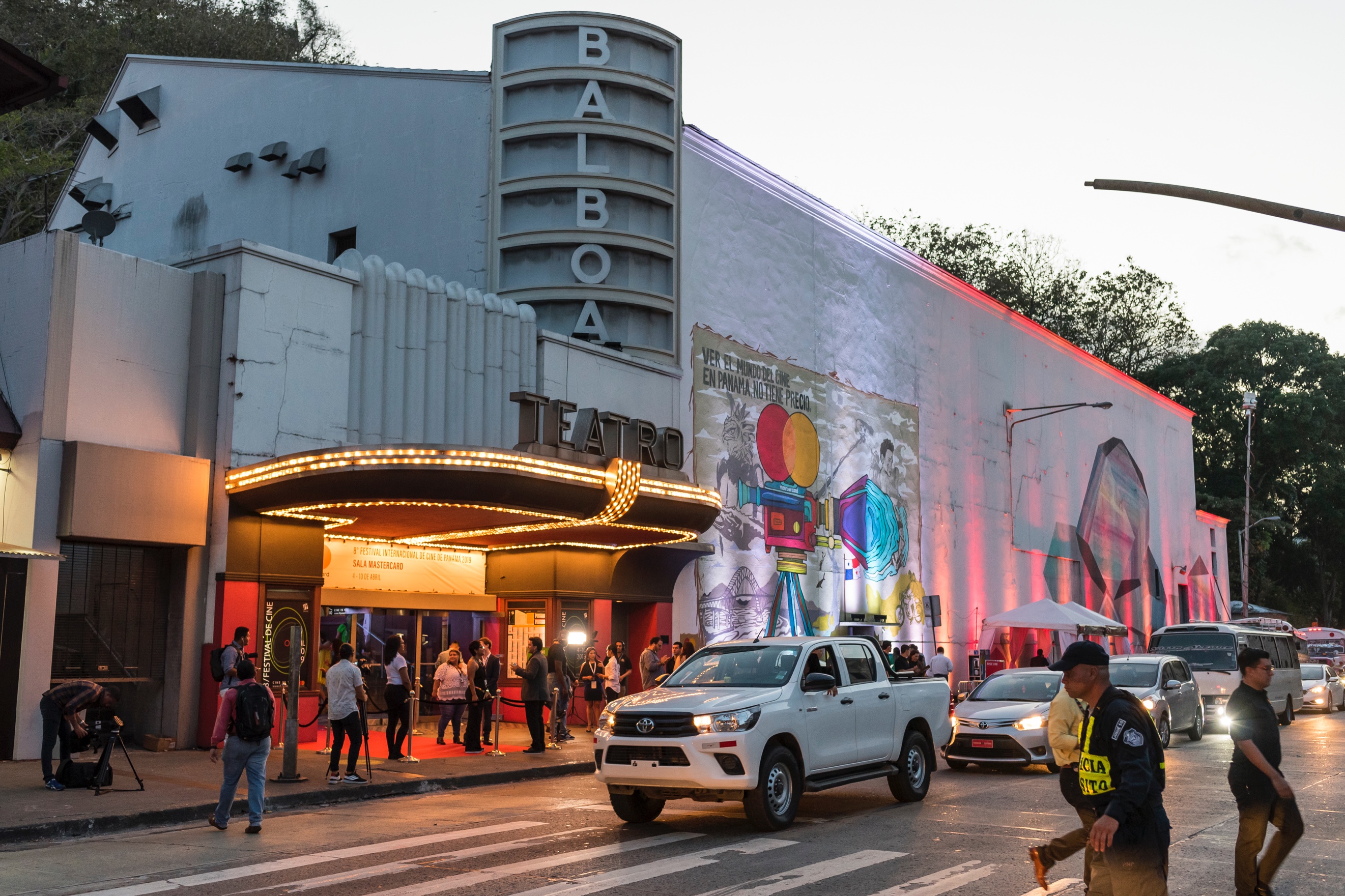Starpower, Industry-Building and Regional Cinema: IFF Panama 2019
Skip other details (including permanent urls, DOI, citation information)
: This work is licensed under a Creative Commons Attribution-NonCommercial-NoDerivatives 4.0 International License. Please contact mpub-help@umich.edu to use this work in a way not covered by the license.
For more information, read Michigan Publishing's access and usage policy.
For the eighth time in history, Panama opened up a space for Panamanian, Iberoamerican and international cinema at its International Film Festival (IFF) in the capital.[1] Artistic director Diana Sanchez was especially lauded during the 2019 edition, as she was recently awarded the title of Senior Director of Film at the Toronto International Film Festival and has been a programming advisor to IFF Panama since its inception in 2011. This connection to TIFF is no mere coincidence, as TIFF co-founder Henk van der Kolk retired to Panama with his family in 2010 after starting up the film festival in Canada in 1976. In 2011 after intense collaboration with local governments, his involvement was a catalyzing factor in the establishment of IFF Panama. After only eighth years, the festival has developed into a prestigious gathering for the region’s upcoming talent as well as more established film professionals in an industry-oriented event that is the only of its kind in the region. In the independent, non-state supported contexts of Central American and Caribbean cinemas, this short review regards IFF Panama as an industry-building platform that attracts international agents and representatives of the press to give impulse to the cultural and economic capital of regional filmmakers through a national showcase, a regional competition, a FIPRESCI critics award and the Primera Mirada work-in-progress fund.

The festival’s programming contained 74 films from 41 countries, including seven films from Panama, and 12 regional titles in the highly anticipated competition ‘Stories from Central America and the Caribbean.’ Given the festival’s industrial predilection, it serves to briefly revise which films are placed in the spotlight as representative of the region’s ‘emerging cinemas.’ Following his multi-awarded debut feature Ixcanul (2014), Jayro Bustamante returned to the festival circuit with Temblores/Tremors (2019), a film on the coming out of a consultant in conservative Guatemala. The tremors from the title not only refer to the regular occurrence of seismic activity but come to represent the dark, intrapersonal struggle of reconciling one’s identity with the conservative values of the immediate community. The protagonist’s public sexual identity surfaces as the tremors rumble through Guatemala City. After he leaves his wife for his lover Francisco, Catholic Pablo loses his job and ends up submitting to his religious family in order not to be criminalized any further and lose access to his children. The intense acting performance of Juan Pablo Olyslager (Pablo) leaves the viewer to decide whether the character acquiesces in the ultraconservative norms because he considers his homophilia to be a disease of which he needs to be cured or more likely because he does not want to be alienated from his children, who do seem to understand his suffering. He passes through an almost surreal gay-conversion therapy in an evangelical church through which Bustamante holds a mirror up to Guatemalan society where homophilia still is legally equated with pedophilia. The film is a provoking portrait of a mysogeny that is internalized in the female characters and its constant disquietude is amplified by a gritty and dark cinematography set in the bustling center of Guatemala City.

Three documentaries were included in this competition, the first being La Asfixia/Asphyxia (2018) by Ana Isabel Bustamante from Guatemala. The film is a personal investigation into the disappearance of her father during the military repression in Guatemala in the early 1980s under the dictatorship of Efraín Ríos Montt. La Asfixia premiered at the Havana film festival, won a jury award at the Guadalajara film festival before winning best foreign film and a FIPRESCI critics award at BAFICI in Buenos Aires. The auteurist style with which she and compatriot Jayro Bustamante, her cousin, have crafted their films aesthetically resonates with the wide spectrum of international standards of ‘arthouse’ or ‘festival films’ that are likely to be popular in the film festival circuit. The inclusion of Asphyxia represents Central America’s topical propensity towards ‘post-memory’ films,[2] in which the past very much permeates the present, up to the point where visual and narrative claims of verisimilitude and pure fiction intersect and construct a new Central American reality. The digging up of recent past events serves an aesthetic that expresses the need for knowing the truth for the purpose of cultural regeneration. The act of constructing a truth about past events is not necessarily meant to assign culpability but serves as the localized subtext for a particular aesthetic and ethical-political discourse that has the ability to generate public dialogue. La Asfixia could be inscribed in the post-memory genre, which has a very rich documentary tradition in Latin America and includes recent exponents such as the work of Marcela Zamora (El Salvador), Gloria Carrión (Nicaragua), Albertina Carri (Argentina) and many others.

The third auteurist Guatemalan film in the competition was Chinese director Li Cheng and writer George F. Roberson’s self-funded LGBTQi-drama José (2018). Like Tremors, this is a feature about romance and Guatemalan homophobia set in the urban complexity of Guatemala City, after the international crew had scouted twenty other major cities throughout Latin America. In all of these places, the producers held interviews with hundreds of young people who inspired the story that eventually found its most vivid backdrop in Guatemalan society. Apart from the ‘Panamanian perspective’ sidebar and the special screening for La estación seca/The dry season (José Angel Canto, 2018), the IFF included the documentaries Tierra adentro/Inland (Mauro Colombo, 2018), on the liminal jungle connecting Panama and Colombia as a violent division between the Americas and Panamá Radio (Edgar Soberón Torchía, 2019) on the city’s vibrant musical heritage in this regional competition.
Most of the other films, however, are marked by a desire to appeal to broader, non-festival-specific audiences of the region through more ‘palatable’, i.e. formulaic, forms of storytelling. Two popular Cuban films with creative and original storylines were included, one revolving around a journey into outer space in El viaje extraordinario de Celeste García/The Extraordinary Journey of Celeste Garcia (Arturo Infante, 2018), and the other about children from Chernobyl receiving treatments in Cuba in Un traductor/A Translator (Rodrigo Barriuso and Sebastián Barriuso, 2018). Costa Rica was represented by four films, among them Apego/Attachment (Patricia Velásquez, 2019), Aquí y ahora/Here and Now (Paz León, 2019), Cascos Indomables/Helmet Heads (Ernesto Villalobos, 2018) and El despertar de las hormigas/The Awakening of the Ants (Antonella Sudasassi, 2019). The Dominican Republic presented Miriam Miente/Miriam Lies (Natalia Cabral, Oriol Estrada, 2018) and completing the selection was Storm Saulter’s Jamaican sports drama Sprinter (2018), executive produced by Jada and Will Smith and featuring a cameo by Usain Bolt.
Sprinter is the most obvious crowd pleaser in this competition. The film tells the story of Akeem, a 17-year old Jamaican aspiring track-and-field athlete who tries to qualify for the national youth team in order to participate in the World Youth Championships in the United States. The ulterior motive for qualifying is to be able to reunite with his mother who had migrated there ten years earlier and who was prevented from leaving again because of her status as an illegal immigrant. The typical sports drama-clichés abound as the young athlete catapults from rags to riches, followed by an inevitable downfall before seeing the light and running towards victory ‘against all odds.’ Akeem is sabotaged by his jealous older brother, himself a former successful athlete, who involves him in a phone scam operation that pays for luxury cars and excessive parties with problematically sexualized representations of women, who in general carry little narrative weight in the story. It is clear that director Storm Saulter wanted to make a film that brings Jamaica’s social and cultural complexity out from ignorance, but in so doing he passes through a rastafari criminal underworld and romanticized sunset-on-the-beach landscapes that do not actually counter many of the foreign preconceptions about the island. More interesting is the inclusion of what Stuart Hall described as ‘Caribeanness’[3] in terms of the energetic dancehall soundtrack, the use of language, humor and culinary references, which ultimately make this film ‘enough’ Caribbean to be presented as such. In the end, what caused Akeem’s brother’s downfall was the choice to move to the US where he was exploited for his athletic abilities and that the ‘American dream’ and resulting migratory flows have caused several social and cultural issues for the Jamaican homeland. Arguably the most formulaic film in the selection, Sprinter, a US co-production, openly aims to reach the (black) North American market.
The majority of the selected films dealt with central themes relating to sexuality and the negotiation of intimate (family) relationships (José, Tremors, Attachment, Here and Now, The Awakening of the Ants). To a lesser extent, Helmet Heads and Miriam Lies also revolved around relationships, in the former as the protagonists’ struggle between life on his motorbike as a bike messenger in the streets of San José and his girlfriend’s wish to move to a bike-less island. In the latter, a biracial 14-year-old girl in the Dominican Republic, Miriam, lies to her family about the internet boyfriend she wants to invite to her quinceañera, or 15th birthday party, that she shares with her upper-class white schoolmate Jennifer. Both films make use of classic narrative strategies of conflict and resolve, even if the conflict might be internalized. Attachment, and The Awakening of the Ants use colloquial, dialogue-driven language with lots of idiosyncratic jokes, an uncompromising cinematography with relatively high-production value and an acting style that sometimes reminds viewers of community theatre plays.
The focus on relationships and sexuality was almost always combined with a reflection of the protagonists on their position as individuals within society and the nation. In a newfound interest in the production of Central American cinema, the canon of which has been expanding rapidly over the last twenty years despite the lack of (strong) state-sponsored funds, these stories present characteristics similar to those from more dominant film industries in Latin America. In impossible attempts to characterize the diversity of contemporary Latin American cinemas, certain trends can be discerned that have increasingly highlighted intimistic, domestic struggles in which the identitarian status quo is revoked through a focus on the psychosocial and the sexual. This (neoliberal) quest for individuality has largely replaced the grand narratives of social transformation that have stereotypically been associated with New Latin American Cinemas. Writers make use of humor, surrealism and irony and even openly bypass potentially interesting yet politically-charged plots developments (as is the case for the Chilean political exiles in Costa Rica in Attachment). Despite the more conventional overtones of the festival’s regional competition, the FIPRESCI press association did bestow its critics award to the ‘post-memory’ documentary Asphyxia (2018) during their first official presence at the festival.

Most international titles were proven festival-successes from the previous editions of the world’s largest and trendsetting festivals such as Guadalajara, Toronto, Venice, Berlin and Cannes. Yet in contrast to some of these festivals, all awards were audience awards. Over the course of the festival’s first eight years one can detect a slight change in taste, switching from favoring relatively low-brow comedies towards features with higher production values, such as the Colombian Matar a Jesus/Killing Jesus in 2018 (Laura Mora Ortega, 2017). This only demonstrates the role and responsibility of film festivals in not only curating film programs but educating audiences, especially in countries that do not yet have a rich cinematographic tradition of their own and whose markets are flooded with North American and Anglophone franchise fare. In spite of the market-adversity for Central American film production and an imperialist conflict-ridden social and political history, a contemporary canon for film in Panama has been steadily emerging over the course of the past ten to 25 years. With well over 20.000 tickets sold in 2019 at 6 USD each,[4] IFF Panama is the only high-profile, high-capacity festival in the region that also focuses on the development of film industries in Panama and Central America. Only the Festival of New Latin American Cinema in Havana reaches more people, with over twenty participating theatres and screenings that accommodate thousands of people at a time.
After Havana’s audience model, the other two medium-sized festivals in the region, the Ícaro International Film Festival in Guatemala (with national counterparts throughout Central America, the Hispanic Caribbean, New York, Buenos Aires and Barcelona), and the Costa Rica International Film Festival (which is now held throughout the country in 15 different locations), focus on providing a space for films, filmmakers and on creating audiences from the perspective of a peaceful, democratic, post-revolutionary leftist ideology.[5] They do not boast red carpets, stars or accreditation hierarchies, emphasizing instead the development of young film professionals, programming many short films in competition, and organizing various talent campuses for young filmmakers and producers. They also do not charge industry membership or press fees and the film exhibitions are usually free or inexpensive for the general audience. Havana’s all-access pass for foreigners does cost 50 USD but it allows for skipping the famous Cuban queues lining up for hours outside Yara, Riviera, La Rampa, Marx, Chaplin and other iconic theatres. The cost for Panama’s industry accreditation varies from the early-bird 50 USD to a last-minute 90 USD, depending on the moment of purchase. In return, industry members receive (non-preferential) access to two daily screenings (to be chosen at the start of the festival at the risk of sold-out theatres) in addition to the press screenings held for the films in the Central American and Caribbean competition, as well as free access to the galas, industry parties and receptions.
The most significant feature of the festival for filmmakers is one that is hardly visible during the festival week itself. The work-in-progress post-production fund Primera Mirada (‘first look’) selects seven feature films in production and awards 15.000 USD in cash from the Inter-American Development bank and a trip to Cannes Film Market for the winner. At the last press conference, festival director Pituka Ortega also announced a new production fund, Su Mirada (‘her look’), that awards another 15.000 USD to be divided among female filmmakers from Central America and the Caribbean with projects in development. With this fund, the festival openly takes part in a worldwide development with regards to equal gender representation in the visual arts. During the festival, the films selected for Primera Mirada are screened behind closed doors to a limited number of international sales agents, distributors and industry insiders that provide, from the perspective of the industry, indications of their potential future trajectory at festivals, appeal to audiences, and an overall insider feedback that is invaluable for films in development.
With an annual one million USD-subsidy from the Ministry of Industry and Commerce and additional support from the Environmental Ministry, MasterCard, the Interamerican Development Bank (BID) and the Pan-American airline Copa Airlines, whose CEO Pedro Heilbron is married to IFF’s director Pituka Ortega, the festival benefits from impressive institutional and commercial support to lay out the red, green (environmental) and blue (airline) carpets for its many international guests. 2019’s accompanying tagline, Cine es Vida, ‘film is life,’ stood however in shrill contrast to the multiplex Cinépolis and its eight theatres in the Multiplaza mall in downtown Panama City, where the majority of film screenings took place. The restored historical Teatro Balboa hosted the opening and closing ceremonies and a small number of other screenings, but it ultimately occupied a rather marginal position in the overall program, as did the free open-air screenings along the city’s coastline and the screening room of the Ministry of Exterior Relations, both near Panama City’s ‘old town’ of Casco Viejo. It is safe to assume that the festival’s growing audience led to the need for high-capacity theatres, driving the bulk of the programming towards the multiplex cinemas and away from the charming colonial-style old town where the festival originated.
The week opened with the presence of Latin America’s best-known and most prolific actor, Ricardo Darín and, almost secondary to his presence, a screening of his romantic comedy El Amor Menos Pensado/An Unexpected Love (Juan Vera, 2018, Argentina). A couple of days into the festival and countless press conferences later, Darín was joined by Roma’s (Cuarón, 2018) production designer Eugenio Caballero and actress Yalitza Aparicio. The latter catapulted to stardom because of her first-time acting performance in Cuarón’s Academy Award winner and was received with overwhelming enthusiasm by the Panamanian audiences and the local government. Other international stars to parade through press conferences included Cuban actor Rodrigo Santoro, actor, director and producer Edward James Olmos (Stand and Deliver, 1988), who presented the closing gala’s screening of the documentary The Sentence (2018, USA), as well as numerous producers, filmmakers and festival directors from high-profile festivals in Latin America and beyond.
They typically gathered at lush, all-inclusive parties and upscale bars, clubs, restaurants, and on a boat that sailed along the coast for three hours while a DJ played and cocktails were served. The night-time events were complemented by daily ‘happy hours’ in the lobby of the luxury festival headquarters, the Central Hotel Panama, where industry insiders mixed and mingled to earn their keep. These happenings might seem commonplace in the red carpet- and photo call-infused world of larger European and US film festivals, but in a Central American context, IFF Panama is the only event to aspire to such a status of exclusivity. This glitter and glamour is best recorded through the commissioning of press releases, reviews and overall write-ups for the festival, including pieces in Variety, Screendaily, LatAm Cinema and other news outlets that happily obliged to take part in the festival’s tropical vibe surrounded by the region’s ‘who’s who.’
Meanwhile, the Locarno Film Festival organized an Industry Academy for eight film professionals from the region, including producer Ana Isabel Martins Palacios and filmmaker Laura Bermudez from Honduras and four Panamanians. Locarno thus joins the list of European film festival with invested interest in Latin American industrial developments, even if Locarno’s central programming team is currently taking the reins at the Berlin Film Festival where it will replace the outgoing festival director Dieter Kosslick. Berlin incidentally had already established satellite talent-development programs of its Berlinale Talents Lab in Guadalajara and Buenos Aires, in addition to the workshops, pitches and meetings of other festival-film funds for ‘the global South,’ such as Cine en Construcción, Hubert Bals, Ibermedia, Aide aux cinémas du monde, Sørfond, etc. In addition to Panama, Locarno is present through industrial masterclasses and workshops at burgeoning ‘high-profile’ film festivals in Sao Paolo, Morelia and Valparaíso. Other festival directors from Sundance, Hot Docs, Havana and Cottbus also met in Panama, which signals an indication from the professional community that there is a demand for regional ‘emerging’ cinemas and industry platforms in relatively uncharted cinematographic territories such as those of Central America and the Hispanic Caribbean.
Author Biography
Jasper Vanhaelemeesch (Belgium, 1991) is a PhD researcher on the Vandenbunder Baillet Latour chair for Film studies and Visual Culture at the Visual and Digital Cultures Research Center (ViDi), University of Antwerp (Belgium). His doctoral research project deals with contemporary Central American film cultures and film festivals, parts of which have been published in international journals such as Studies in Spanish and Latin American Cinemasand NECSUS. European Journal of Media Studies. As a film festival researcher, he has been a member of the jury and selection committee at the Ícaro International Film Festival in Guatemala.
Notes
This review has been written at the Visual and Digital Cultures Research Center (ViDi) in the context of a doctoral research project supported by the Vandenbunder Baillet Latour Chair for Film Studies and Visual Culture. It is also part of the research project CSO2017-85290-P, funded by the Ministry of Economy and Competitiveness of the Spanish Government and co-financed with European Regional Development Funds.

Hirsch, Marianne. Family Frames: Photography, Narratives and Postmemory. Harvard: Harvard University Press, 1997.

Hall Stuart. “Cultural Identity and Diaspora.” In Identity: Community, Culture and Difference, edited by Jonathan Rutherford, 222-237. London: Lawrence & Wishart Limited, 1990.

Exact attendance numbers have not been released by the festival.

Vanhaelemeesch, Jasper. “20 Years of Ícaro spreading its wings: Ícaro International Film Festival.” NECSUS: European Journal of Media Studies 7, no. 1 (2018): 273–281, http://dx.doi.org/10.25969/mediarep/3428.




